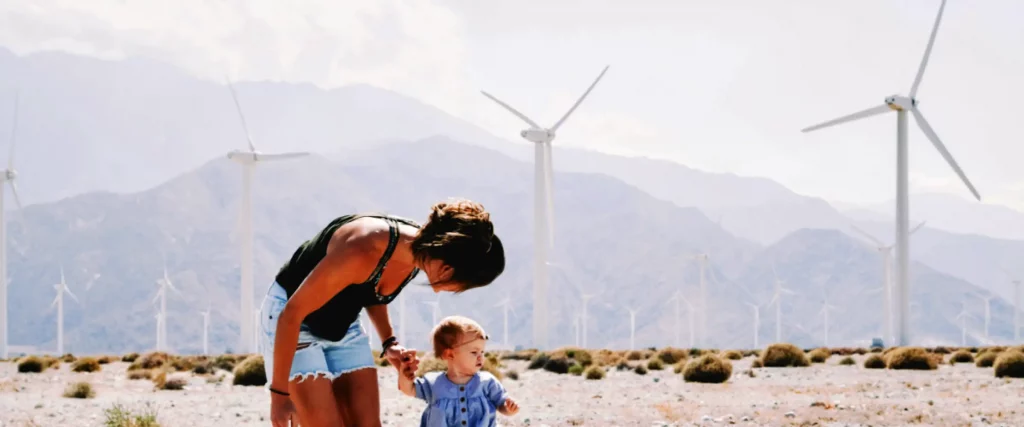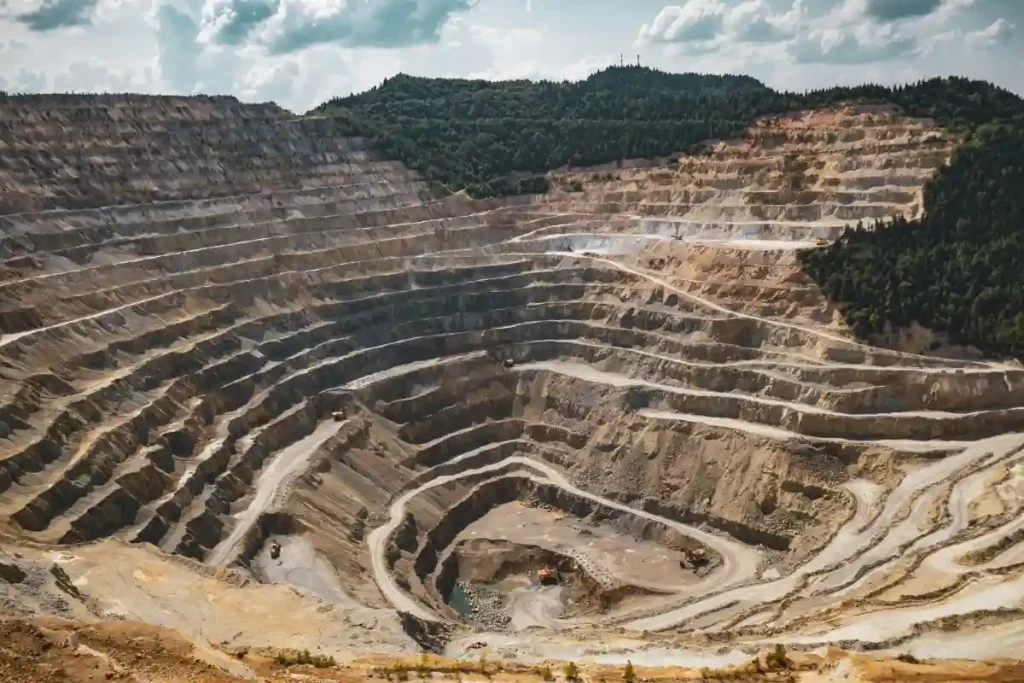This article has been very difficult for me to write because I get pulled in all directions by my conscience. Part of me sees the innate environmental benefit of using solar and wind, over using fossil fuels to generate electricity. But a part of me thinks that, as humans, particularly under late capitalism, our energy consumption will just continue to rise – look at the growth of AI and the energy those data-centres consume.
In addition, governments and energy companies often deceive people about what’s happening – the amount of energy that wind and solar actually generate is just a part of the energy generated in the ‘renewables’ category. Sadly that category also includes biomass power stations, such as Drax in the UK, that have reportedly been using wood pellets from the USA (and not from waste wood….).
As a starting point, you should be aiming to use no electricity at all.
There is an illusion that solar panels, renewable energy, battery storage and so on, are ‘green’ and environmentally friendly. They are not. This is a fiction that we have been sold, and importantly, that we want to believe in.
Context is everything.

It is true that solar and wind energy are less environmentally damaging that other forms of energy production, but that doesn’t make them good, just better than the alternative.
I’m not going out of my way to be negative on ‘green’ energy, and I’m certainly not an apologist for the fossil fuel industry – I’m a deep-green environmentalist at heart. I’m just being honest and pragmatic: I understand that anything we manufacture, in fact almost everything we do will have an impact and cost to the environment. So some impact is unavoidable. And no, I’m not suggesting we live in caves.
Many people think, or have been led to think, that energy generation is a binary choice – ‘green’ or ‘not-green’, ‘renewables’ or ‘non-renewables’. But energy generation only happens because we use it, and increasingly we are using more and more whether directly or indirectly. For every gain we make by adding solar or wind to the grid, we seem to loose more due to increasing demand for electricity.
For every gain we make by adding solar or wind to the grid, we seem to loose more due to increasing demand for electricity.
What’s not spoken about is a third choice, which is to actively and purposefully use less in the first place!
To use less flies against our capitalistic culture. Using and consuming less does not help the economy grow, does not satiate shareholder greed, so ‘we’ are not and will never be encouraged by governments and businesses to consume less because it’s not in their interests. But what is best for our real human interests? Or the interests and well being of the rest of nature that we share our living earth with?
Governments and businesses will argue that a growing economy is the only model that affords the spare capital to invest in measures that preserve our environment – but honestly, when has that really happened? And the more our economies grow, the more remedial work has to be done because more damage is done in the intervening period etc – the goals will always be moving and there will never be enough spare capital to do the right thing.
In 2024, global electricity consumption accelerated (+4%, compared to the 2.7%/year average over 2010-2019 and in 2023)… Steady economic growth, high demand from industry and data centres, higher cooling needs and rising EV charging.
https://yearbook.enerdata.net/
Caught between a rock and a hard place, what can we do?
When I think about my own solar electric system in my cabin, I tried to design it so I don’t need any electricity at all. Work spaces and window positioning can lessen or eliminate the need for additional lighting. The orientation of a building can lessen the need for heating in winter and cooling in the summer. Living more in tune with the seasons – going to bed earlier in the winter will reduce your electrical consumption.
Thoughtful design and lifestyle changes can make a huge difference.
Of course, I’m not living in a cave, and whilst I will aim for zero electricity use, the reality is I do have some requirements. I will need some task lighting, I will need some USB for charging my phone (like I said, I’m not living in a cave…) and a 12v to 230v inverter for powering a couple of mains-only tools (I try to use hand tools where practical and possible).
For me, in my cabin, I can do all I need, all year round, with one 100 watt solar panel, a 500 watt inverter and a 100Ah lead-acid battery. Your ‘needs’ might be different – I’m not judging you, I just want to make you think a bit deeper.
Do you really need several Kw of solar and a huge lithium ion battery bank?
So what’s the problem with solar panels, batteries and wind turbines?
It’s true that, at the point of use, a solar panel or wind turbine is clean and ‘green’. No emissions are being generated and that’s brilliant.
But in order for the solar panel, battery or turbine to be in your possession, a lot will have had to happen. These external costs, are often forgotten about and usually hidden from your worldview because they happen ‘elsewhere’.
Let’s look at four areas you might not have considered:
- Raw material extraction, purification and processing
- Manufacturing
- Distribution
- End-of-life disposal or recycling
Raw material extraction
The ‘solar cells’ that are put together to create a solar panel, are primarily made from silicon, along with some other elements. The silicon is in itself, is made from a rock – quartzite which is usually extracted through open-pit mining or dredging.
Whilst quartzite is a very common rock, the extraction and processing like any other done at scale, has a significant impact on the environment. The extraction and processing will also consume a large amount of energy, probably through fossil fuels.
Wind turbines will need ‘rare earth’ minerals to make the best magnets, and lithium ion batteries will need lithium and cobalt and other materials. Whilst a lot of work is being done to ensure these are extracted with minimal damage to the environment and minimal exploitation of people, we know that is not always the case.

Manufacturing
Having created the pure silicon ingots, the manufacturer will assemble and wire them into the panels that you finally see. More raw materials (possibly some lead) will be consumed in this process.
Finally, most solar panels are bonded to a sheet of glass and then encased in an aluminium frame. Aluminium, if not recycled, requires mining and refining of the mineral bauxite – a process that requires significant amounts of energy.
Distribution
So the final product has been made and now it needs to be packaged up and dispatch to where it’s wanted. Of the top 10 global manufacturers, 6 are located in China (with the others being Japan and the USA). So if, like me, you’re located in the UK or Europe, then your solar panels will have had to travel half way around the world before they are making any electricity.
End-of-life disposal or recycling
Nothing lasts forever. At some point your battery won’t hold charge, or your solar panel will be under performing, or your wind turbine will break.
As the product reaches the end of its useful life, it will need to be disposed of and replaced. Solar panels can theoretically be recycled into glass, aluminium and silicon, but it’s not an easy process and remains economically unviable at this point in time. Wind turbines can have metal parts recycled, but the blades are difficult to do anything with at the moment (that might change) and are usually buried. Lead acid batteries can be easily recycled (which is why I like them), but lithium batteries are a greater challenge.
I’m really not trying to knock renewables – I use them myself. I’m pointing out that there is a dark side to them (as with most manufacturing), and that the answers we seek will not be found in just switching from non-renewable power generation to renewable power generation. The real problem is our appetite for stuff – our consumption habit.
Unless our consumption habits change, the green energy revolution will keep us on the same path, perhaps just delay the inevitable ‘crash’.

Leave a Reply